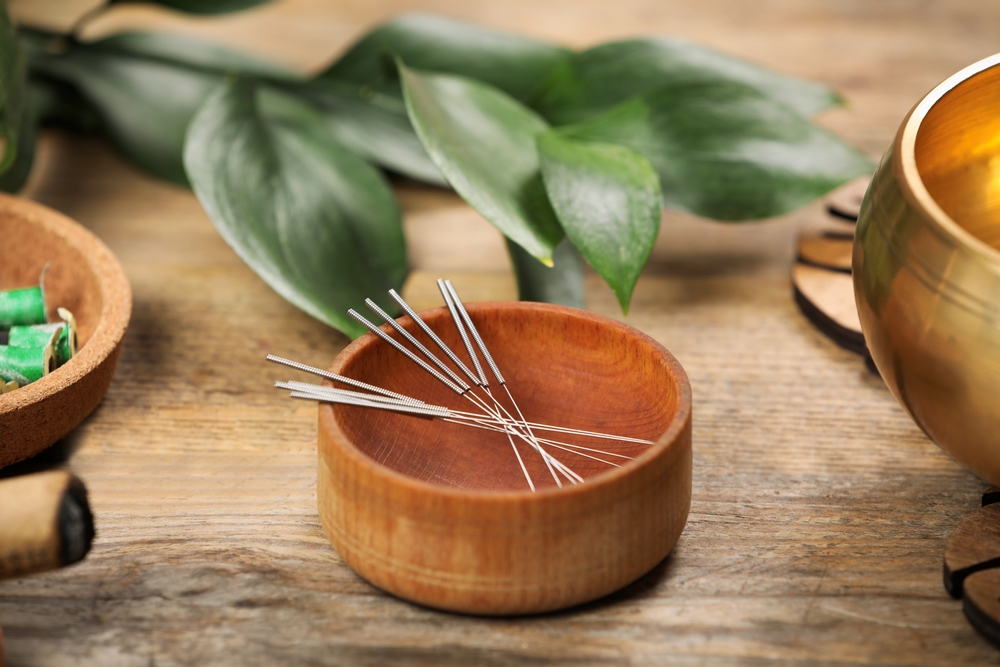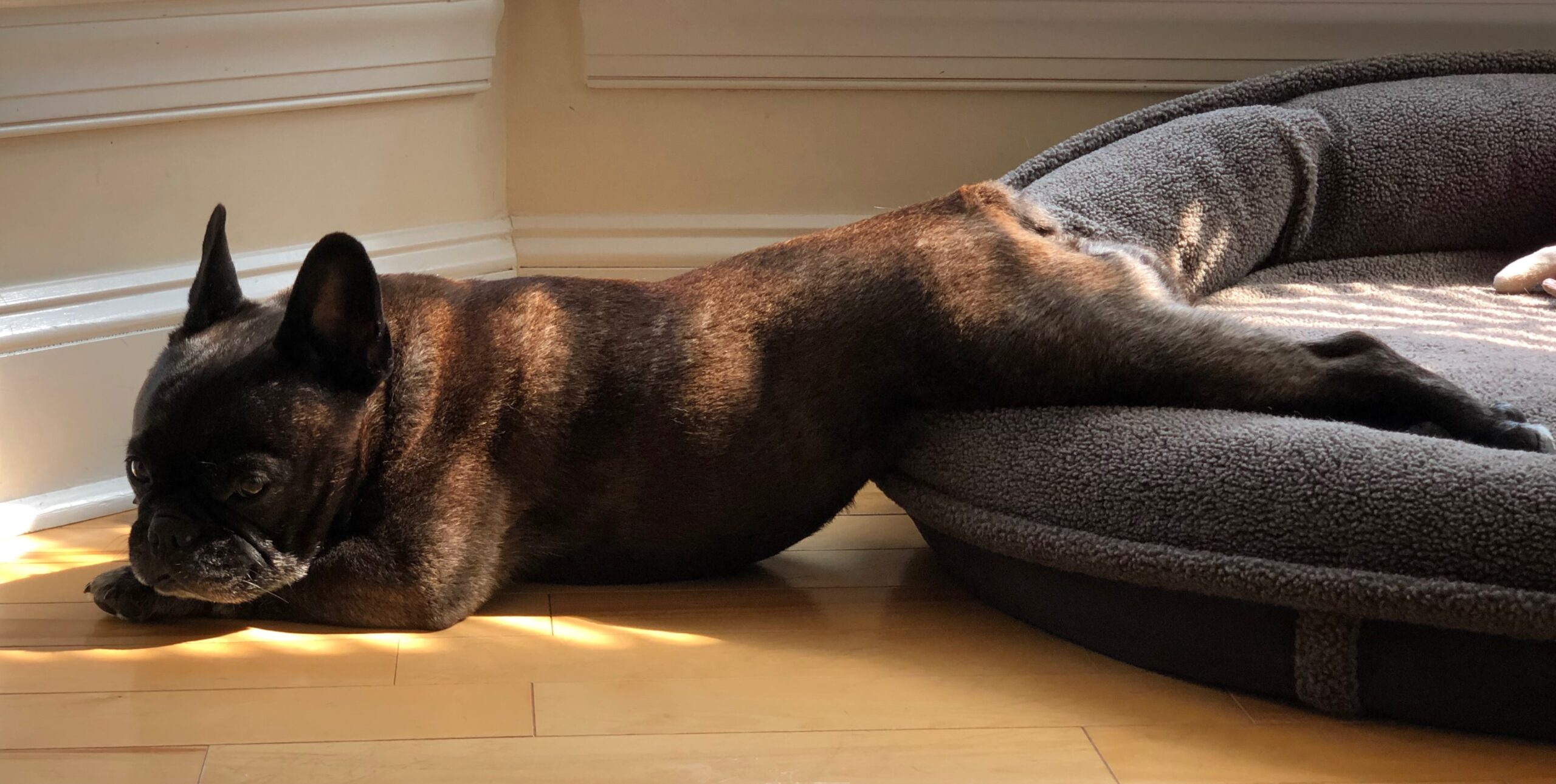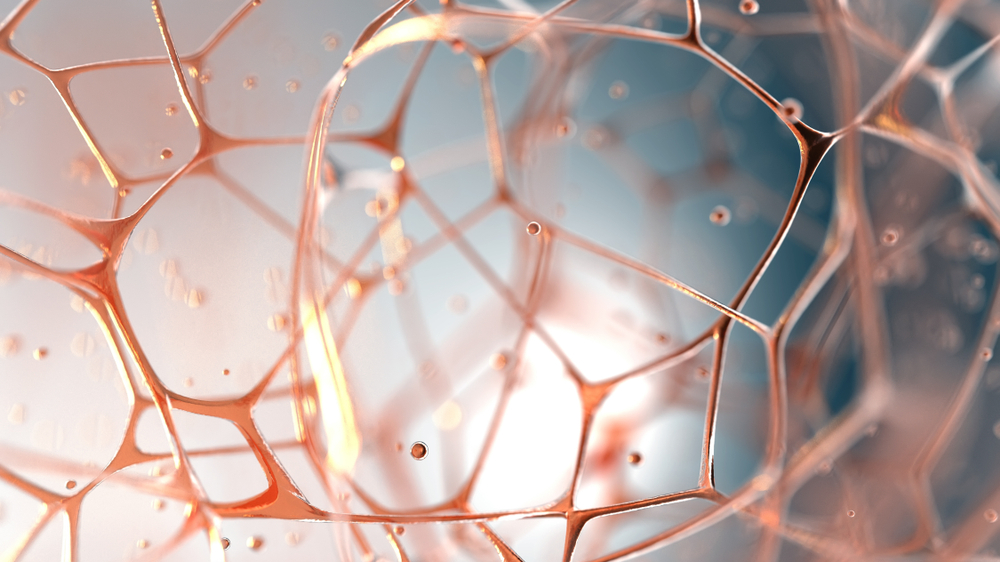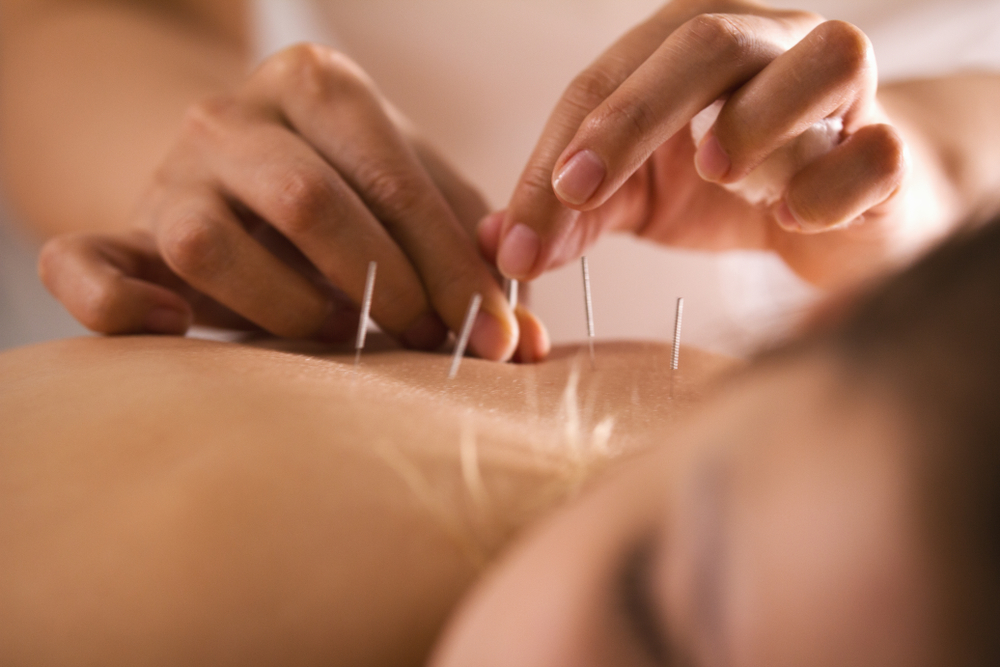Although acupuncture’s original use was primarily for prevention of illness, it has become more widely known in the West for its benefits in relieving pain. The World Health Organization currently recommends acupuncture as an option for treatment for over 100 conditions, including many types of pain. Acupuncture works to relieve pain in areas like the low back, neck, shoulders, elbows, and knees. It can help with sciatica, facial pain, neuropathies, and headaches.
According to Traditional Chinese Medicine (TCM) theory, pain is due to stagnation of the flow of energy. Acupuncture works to relieve pain by removing blockages within the energy circuits, or meridians, and promoting the free flow of Qi and Blood. Western scientists have long sought to find explanations more in keeping with physiologic models of bodily function. Research has, in fact, revealed multiple effects of acupuncture on the body that may account for its effectiveness in treating pain. Let’s take a look.

Acupuncture works to relieve pain by releasing endorphins
Acupuncture has been proven to promote the release of powerful neurotransmitters called “endorphins”, from “endogenous”, meaning intrinsic to the body, and “morphine”, a strong opiate medication. Endorphins have been called “natural painkillers”, “feel-good chemicals” and “nature’s high” because they promote feelings of pleasure. Endorphins are released in response to pain and stress, but also by activities like laughter, music, good food, vigorous exercise, and sex.
During an acupuncture session, endorphins are released. These block the perception of pain by binding to the body’s opiate receptors. Many people also experience a sense of intense well-being, or even euphoria. Endorphins are believed to have other health benefits as well, potentially supporting immune health, memory, and cognitive function.

Acupuncture works to balance the nervous system
The Autonomic Nervous System (ANS) regulates the unconscious functions of the body. There are two sides to the ANS, the sympathetic (SNS) or “activating” side, and the parasympathetic (PNS) or “regenerating” side. The sympathetic side of the nervous system is responsible for our stress response, sending stimulating hormones into the bloodstream that prepare us for “fight or flight”. The PNS helps us “rest, nest, and digest”. It has functions like shifting blood flow to our core organs after a meal and activating transition into sleep when it is time for our bodies to relax.
The SNS is all about action: blood flow is shunted to the muscles, which means away from the gut. Heart rate and blood pressure increase, muscles tighten- even our posture shifts as we crane our heads forward to face the threat and round our shoulders in a defensive posture.
Many of us, these days, are in a sympathetically dominant state. We multi-task through our days, working through lunch, eating in the car, spending evenings helping with homework or finishing up the day’s tasks. Phones bombard us with news, texts, and calls 24 hours a day. Our bodies get stuck in a hyper-vigilant state, wired, unable to sleep despite our exhaustion.
Autonomic imbalance can play a role in many common conditions, like GI complaints, headaches, insomnia, and depression. Studies have shown that acupuncture influences unconscious functions like heart rate, blood pressure, muscle tone, and pupil size. Toning down the sympathetic drive helps relax tight muscles and open up the circulation, improving blood flow to muscles and organs. Acupuncture works to relieve pain by restoring ANS balance, relieving stress-associated symptoms.

Acupuncture works through the fascia, or connective tissue
The “fascia” is a layer of connective tissue that covers all the structures of the body. It creates an intricate web, surrounding and investing muscle fibers and covering tendons, ligaments, bones, and organs. This loose matrix of cells and proteins comprises a dynamic layer of tissue that provides a structural framework, and potentially a communication network, for the entirety of the body.
It has been proposed that the fascia is the anatomic location of the TCM meridian system. Dr. Helene Langevin has done some groundbreaking work showing a strong correlation between meridians and acupuncture points within defined planes of the connective tissue. Her team has obtained detailed images showing conformational changes in the fascia in response to manipulation of acupuncture needles. This could explain how a needle placed in an acupuncture point could influence an area of the body some distance away.
In health, the fascia is elastic, stretching with our movements. It provides a slick, smooth surface that allows structures to glide past each other without friction. The fascia can be damaged by things like poor posture, repetitive stressful movements, trauma, inflammation, insufficient activity, and autoimmune conditions. With injury, the fascia can thicken and crinkle up, become sticky, leading to pain, stiffness, and restrictions of range of motion.
The fascia can be manipulated with specialized massage techniques or through needling. Restoration of distorted fascia to its healthy architecture, from a Western medicine perspective, removes restrictions to blood flow, allowing delivery of oxygen and nutrients into the area and removing waste products like lactic acid and inflammatory mediators. In TCM theory, releasing the restriction is the equivalent of “removing a blockage in the channel”; energy flow in the form of Qi and Blood resumes, pain is relieved, and balance is restored.
At Acupuncture Energetics, focused needling to release the fascia is often incorporated into holistic acupuncture treatments to provide deep and long-lasting relief from muscle and joint pain. Dr. Edmunds has trained with some leading experts in the field to offer several dry-needling techniques. We use therapeutic combinations of infrared heat therapy, myofascial release through needling, and application of electroacupuncture to provide relief for swollen, painful joints and tight, painful musculoskeletal problems.

Acupuncture can improve mobility
It is a vicious cycle that when we hurt, we don’t want to move. After an acute injury, a period of rest may be advisable to allow for healing. Pain can become chronic when it persists after the healing phase is over. In this situation, prolonged immobility can be counter-productive, leading to loss of strength, decreased range of motion, and further incapacity.
Acupuncture can help relieve muscle tension and improve flexibility, opening the door to resuming activity and regaining function. Acupuncture (especially electroacupuncture), has also been proven to be an effective therapy for osteoarthritis of the knee, providing pain relief and functional improvement. With relief of pain, even the most deconditioned patients are often able to begin gentle movement practices like chair yoga or Seated Tai Chi.

Acupuncture addresses emotional balance
While Western medicine has only relatively recently adopted the concept of the “mind-body connection”, TCM has always recognized our emotional, physical, and spiritual selves as inseparable. The benefits of treating the emotional aspect of pain is gaining increased attention in Western medicine, while it has always been foundational in TCM to treat the entirety of the individual.
At Acupuncture Energetics, patients receive a comprehensive assessment and a holistic, balancing treatment in addition to therapy targeted at the individual’s concerns. The deep relaxation many patients experience during sessions is conducive to healing on physical, emotional, and spiritual planes. Acupuncture treatments provide an avenue for release of strong emotions like fear, anger, and grief, and can help free the body of stored traumas.

